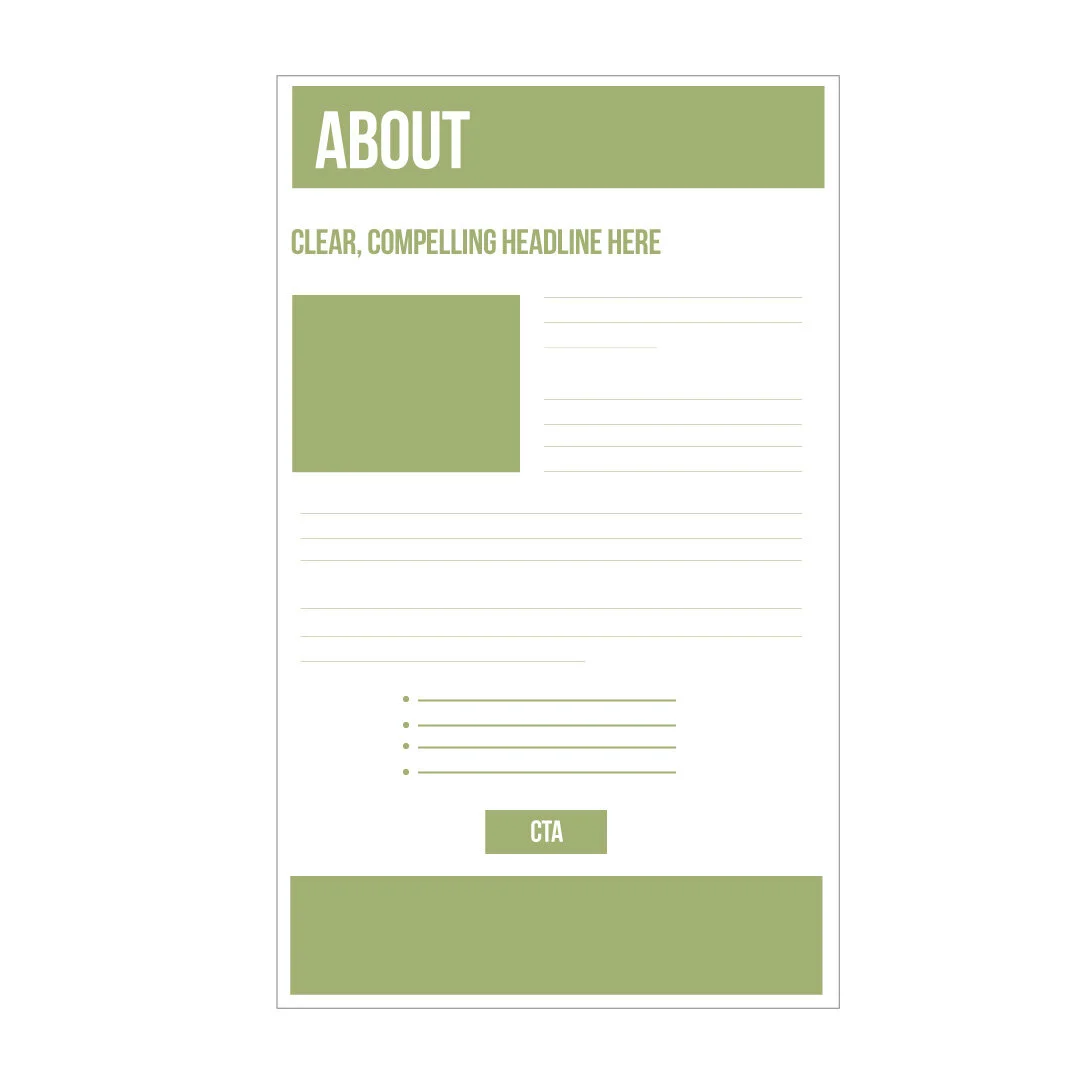FAQ: What Goes On Your ‘About’ Page
You may have read that your about page is one of the most visited or most important pages of your website. It’s true. It’s also one of the hardest to write.
A natural impulse is to treat your about page like a resume. It’s tempting to go on at length about your professional history, talk about your life story attempt to prove yourself to a potential client by listing all of your accomplishments and credentials.
This is all wrong.
Your about page isn’t really about you. It’s about your customer. You can include some biographical information, but keep it to about 20% of the content or less.
Yes, your customer does want to know if you’re qualified to help solve their problem. Your qualifications are secondary, though. What really keeps potential customers reading is how much you understand them and what will benefit them.
First, create a compelling benefit driven headline. I wrote about benefits vs. features in my post about what to put on your home page. Put this headline above the fold on your about page.
As you continue writing your about page, address the following questions your potential client may have by answering the following:
How can you help them? You should have an idea of what your customers struggle with. Talk about these pain points and how you can help fix them.
Who are you (full name) You can include this in your headline.
Can you solve his or her problem? How? Talk a bit about your approach. This is a good place to use anecdotes about past projects.
Can the reader trust you? This is where credentials come in, and support answering the question of how you can help. Another good place to include anecdotes and social proof like testimonials. Good photography of you is important here. Humans glean a lot of subliminal information from imagery.
Why would this potential customer like working with you? Think about your writing voice. Try to write the way you talk and keep your copy conversational. One approach is to imagine your ideal customer, record a voice memo as if you’re having a conversation with her, then transcribe what you say.
What's in it for them? Explicity write about what your customer will get out of working with you (remember: benefits!) This is another great spot to include war stories and testimonials.
Eliminate Objections (ex. This isn't gonna work for me, too expensive, etc.) Think about all the reasons a potential client would hesitate to work with you, address them one by one.
Lastly include a CTA (call to action) at the bottom of the page. Your call to action can be something like a button to book a free discovery a call or an invitation to sign up to your mailing list. Give the reader an opportunity to continue engaging with you.
Writing an about page is really hard. I continually update and tweak mine. Start by writing a ‘shitty first draft’.
Just get it all out on the page without editing. Then edit, edit, edit.
And remember: don’t make it too long.
Need help getting your website project off the ground? Book a free consult call now!

